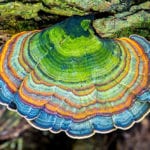 Technology
Technology  Technology
Technology  Humans
Humans 10 Everyday Human Behaviors That Are Actually Survival Instincts
 Animals
Animals 10 Animals That Humiliated and Harmed Historical Leaders
 History
History 10 Most Influential Protests in Modern History
 Creepy
Creepy 10 More Representations of Death from Myth, Legend, and Folktale
 Technology
Technology 10 Scientific Breakthroughs of 2025 That’ll Change Everything
 Our World
Our World 10 Ways Icelandic Culture Makes Other Countries Look Boring
 Misconceptions
Misconceptions 10 Common Misconceptions About the Victorian Era
 Mysteries
Mysteries 10 Strange Unexplained Mysteries of 2025
 Miscellaneous
Miscellaneous 10 of History’s Most Bell-Ringing Finishing Moves
 Technology
Technology Top 10 Everyday Tech Buzzwords That Hide a Darker Past
 Humans
Humans 10 Everyday Human Behaviors That Are Actually Survival Instincts
 Animals
Animals 10 Animals That Humiliated and Harmed Historical Leaders
Who's Behind Listverse?

Jamie Frater
Head Editor
Jamie founded Listverse due to an insatiable desire to share fascinating, obscure, and bizarre facts. He has been a guest speaker on numerous national radio and television stations and is a five time published author.
More About Us History
History 10 Most Influential Protests in Modern History
 Creepy
Creepy 10 More Representations of Death from Myth, Legend, and Folktale
 Technology
Technology 10 Scientific Breakthroughs of 2025 That’ll Change Everything
 Our World
Our World 10 Ways Icelandic Culture Makes Other Countries Look Boring
 Misconceptions
Misconceptions 10 Common Misconceptions About the Victorian Era
 Mysteries
Mysteries 10 Strange Unexplained Mysteries of 2025
 Miscellaneous
Miscellaneous 10 of History’s Most Bell-Ringing Finishing Moves
Top 10 Korean Foods You Have To Try
This article was written by me as a guest article on KoreaTaste.org – the intention of the article is for me to win a trip to Korea where I can learn more about Korean food. Please visit the article and give it the thumbs up to help me achieve this dream! I have also written another article there which you may like called Making The Switch to Korean Food. Note: registration is not required. I decided to publish the article here as well because it is in the format we all love and it doesn’t hurt to have a second list on one day from time to time!
All images are of my attempts to follow the recipes linked below. The recipes are easy to follow and each one is incredibly delicious. If you can make these dishes you should because home cooking is always best, but if it is not possible, be sure to try them all out at your local Korean restaurant. You should also note that the recipes all contain videos of the cooking process.
The Korean culture is quite unique in its approach to food. Food seems to permeate every aspect of life. If you have watched a Korean drama or movie you will undoubtedly have noticed that in at least one scene someone is eating. There are even entire films and dramas based around Korean cuisine. For Koreans food is much more than something to fill the belly – it provides taste, medicine, and a connection to the country. Below I have listed ten dishes that, in my opinion, are truly the most delicious; these are foods that every Westerner will love as much as Koreans.

Soondubu jiggae is a Korean stew (jiggae) – thicker than a soup but thinner than a porridge. When cooked in the traditional way (in an earthenware pot – pictured above) all of the cooking is done in just the one dish. This makes it very easy to clean up afterwards – a job we all hate. It starts with a delicious fish stock and a little beef to deepen the flavor then finished off with fresh shell fish, hot pepper flakes, silken tofu, and eggs which are optional. The best thing about this stew is that you – the cook – can control how hot you want it but limiting the quantity of hot pepper flakes. You can have it blisteringly hot or very mild which is particularly handy if you are cooking for children who can’t stomach their food too spicy. The small amount of beef is typical of Korean food and illustrates how healthy it is – the meat is used for flavor rather than stomach filling. This is a dish everyone should try – it is really one of the nicest ways to introduce someone to tofu which picks up all of the flavors of the stew while adding a soft comforting texture. Eat it with rice and side dishes for a complete meal.

Seolleongtang is an incredibly popular soup in Korea – there are even restaurants who specialize in making just it. Of all the items on this list, seolleongtang is the most time consuming as you must boil the beef bones (typically ox leg bones but you can make do with ox tail) for hours and hours to release all of the calcium which gives it the very distinctive white look. But don’t be fooled by the color – this is the beefiest tasting soup you can imagine! When you boil the bones you can also add a large piece of beef and radish which you slice and add to the soup at the last minute. While this is a great winter soup it is also delicious in summer. It also makes a huge quantity so you can make it on the weekend and consume it during the week. In Korea this might be eaten for breakfast – not just dinner – as Korean’s typically have soup, rice, and side dishes for breakfast.

Ddukbokkie is the delicious smell of Korean cities at night. In large Korean cities like Seoul, the streets are filled with vendors selling their own special recipe versions of the most popular street food. Ddukbokkie (it is pronounced roughly like “dok-bok-ee”) is one of the most popular and it comes in various styles. In the example above I used the linked recipe but also added sliced fish cakes and boiled eggs. The sauce is spicy but it is also very sweet and packed with an immense amount of flavor. The spiciness is cut by the long cylindrical rice cakes which, when cooked, become chewy and soft. The rice cakes are probably the most unusual part of the recipe for most westerners but when they try it – they love it.

When I first made Dakjuk I wasn’t expecting it to be one of my favorite dishes – it seemed far too simple a recipe. Boy was I wrong! Essentially you boil a chicken in a huge pot of water with onions and a lot of garlic – then you add sushi rice and cook it until the chicken is done. The end result is a thick stew (which Koreans refer to as a porridge even though it has no oats) caused by the rice breaking down bursting with rich chicken and garlic flavor. You tear the chicken up and eat it with the porridge. This is a meal you will make again and again because it really is super easy. I must add one warning though: if you are peeling the garlic by hand (instead of using pre-peeled store bought garlic) wear gloves; garlic oil in large quantities can cause third degree burns – which I found out the hard way!

If you have a sweet tooth you are guaranteed satisfaction with this amazing pancake sold by street vendors. It is a little more complex than a western style pancake because it is made with a yeast dough but the effort is well worth it. The dough (virtually identical to a western bread dough) is filled with a mixture of cinnamon, brown sugar, and chopped walnuts and fried in a lightly oiled pan until the filling has melted into a syrup. This really is the queen of pancakes and it is incredibly popular with children. Try this out next time the kids want pancakes for breakfast – they will love you for it. And if you don’t like the sound of the filling or don’t have a sweet tooth, just fill it with mozzarella cheese instead.

I guarantee that once you try this, you will be ditching KFC (Kentucky Fried Chicken) and switching to the other KFC – Korean Fried Chicken. This fried chicken has to be tasted to be believed. When you bite into a piece of this chicken you are initially met with a sticky, sweet, spicy red sauce. But then your teeth crunch through a triple cooked batter so crispy that you wouldn’t believe it possible. This then leads to the most incredibly moist and flavorsome chicken inside. This really is one of the most delicious Korean foods ever invented. In Korea there are many shops selling their own special version of yangnyeom tongdak and they deliver until the late house of the night. But home made is always better. This recipe is particularly good as it shows (because of the addition of ketchup) how Koreans are willing to adopt foreign flavors and use them to their advantage. You need to try this as soon as possible.

Japchae is one of the most popular Korean dishes both inside and outside of Korea and when you taste it you will understand why. Originally japchae was made without noodles – it was invented for the King by one of his chefs and he loved it so much that it became famous across Korea. In more recent times the noodles were added and now they are an essential element to the dish. The noodles used are sweet potato starch noodles which give japchae its very distinct chewy texture. The vegetables are all lightly cooked so they retain all their flavor. This is definitely a great alternative to the typical (and often bland) stir fry we all cook at home when we want “Chinese”. If you like Korean pop music, here is an amusing video clip of Super Junior’s Eun Hyuk promoting japchae – his favorite Korean dish.

Bulgogi is an extremely versatile way of preparing beef and the one most westerners have sampled at Korean restaurants. Typically in the west we eat bulgogi on a korean barbecue – a hot plate in the middle of the table. But in Korea this is just one of many ways. It can be made into a stew (as in the recipe above) or as the basis for other dishes. It is such a versatile marinated meet that you could even use it to replace pulled pork in a western style sandwich. Bulgogi is very thinly sliced beef which is marinated in a sauce made from pear juice, garlic, soy sauce, and many other things. There are as many recipes as their are uses. The end result is a delicious sweet, savory, and soft slice of meat. My favorite way to eat it is to wrap it with a small amount of rice and dipping sauce in a lettuce leaf. It is also incredibly low fat and very healthy.

If you try only one recipe from this list – let it be bibimbap. In Korean, “bibim” means “mixed” and “bap” means rice. All of the ingredients except the meat (which is optional) are prepared in advance so you can add them at room temperature to the top of hot steamed rice. You then quickly fry and add the meat and a sunny-side up egg to the top. Bibimbap is usually served with a spicy sauce made from gochujang (Korean hot pepper paste) which you can add to your liking – allowing you to control how hot it is. You then use your spoon (Korean food is always served with metal chopsticks and a spoon) to “bibim” it all until it is completely mixed together. The trick then is to see how much you can fit in your mouth in one go! Well, not really, but it tastes so good that that is invariably what happens at my house. This really is a taste sensation and it really is impossible not to fall in love at first bite.

Kimchi is the national dish of Korea. At first it can sound daunting to us westerners because of the word “fermented” but don’t forget that we eat a lot of fermented foods already – yoghurt and bread for example. In the case of kimchi the cabbage is coated leaf by leaf in a delicious spicy mix of hot pepper flakes, garlic, chives, onion, pear juice, and more. It is then able to be eaten right away (in which case it is fresh, not fermented) or you can leave it out of the refrigerator for two or three days to start the fermentation process. As it ferments it develops a rich and slightly sour flavor – true also of German sauerkraut (which means sour herb or cabbage). It lasts for months and is also used as the base for many other dishes such as kimchi stew and even as a filling for kimbap (Korean sushi). Kimchi is such an important dish in Korea that it is eaten with breakfast, lunch, and dinner. It may not look pretty but it sure tastes good! And if you don’t have time to make it yourself (it can be a little time consuming) it is always available pre-made at your local Korean grocery.
If you like this list, please visit the original article and give it the thumbs up. Thanks!





![Top 10 Disgusting Foods The Chinese Eat [DISTURBING] Top 10 Disgusting Foods The Chinese Eat [DISTURBING]](https://listverse.com/wp-content/uploads/2020/03/23773182-0-image-a-46_1580303417295-150x150.jpg)


